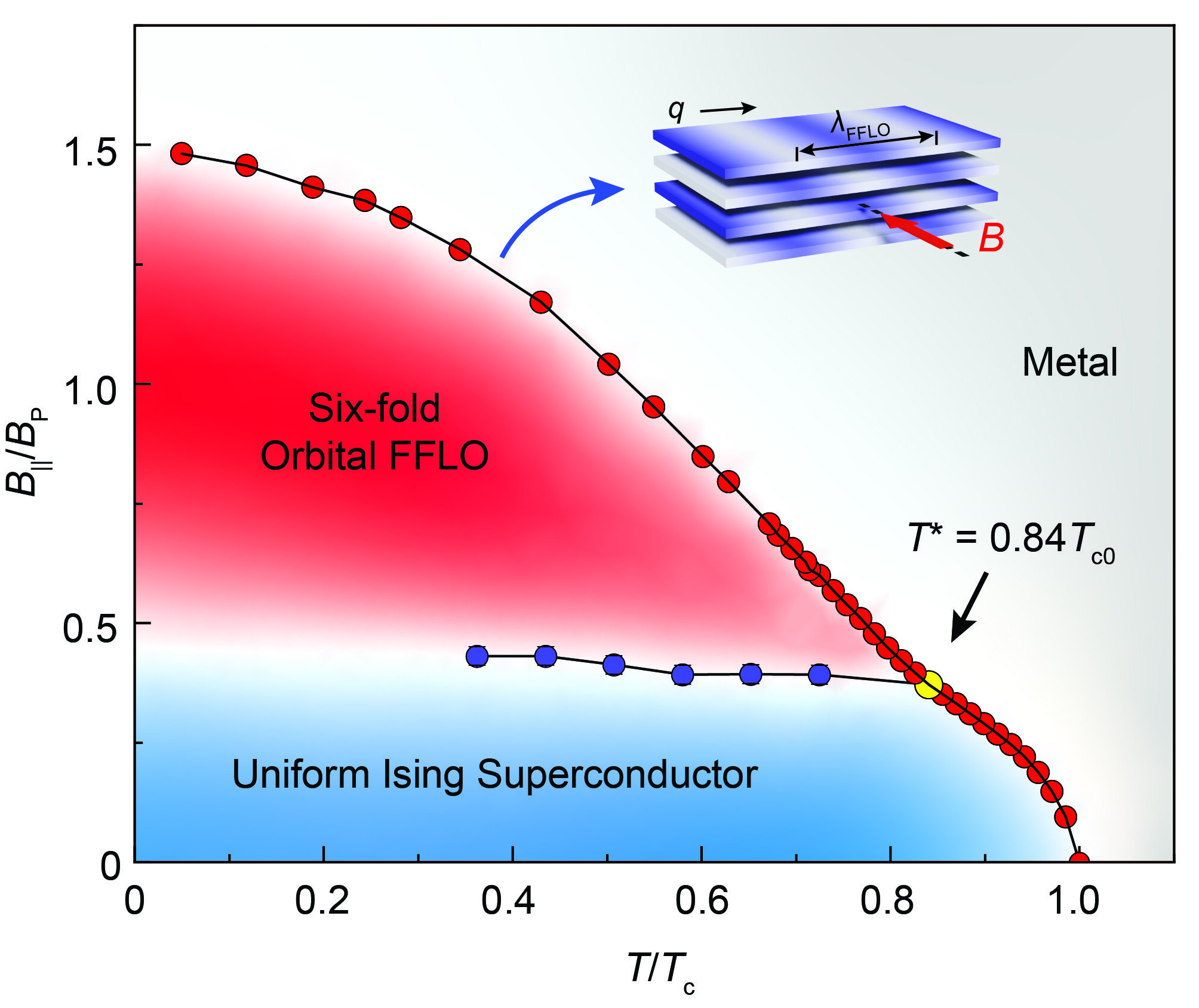Researchers from the University of Groningen, along with colleagues from the universities of Nijmegen and Twente in the Netherlands and the Harbin Institute of Technology in China, have discovered a new superconductive state that could have significant applications in the field of superconducting electronics. The team has presented evidence for a variant of the FFLO superconductive state in a paper published in the scientific journal Nature.
The lead author of the paper is Professor Justin Ye, who heads the Device Physics of Complex Materials group at the University of Groningen. Ye and his team have been working on the Ising superconducting state, which is a special state that can resist magnetic fields that generally destroy superconductivity. This state was first described by the team in 2015.
In 2019, Ye and his team created a device that could couple the Ising superconductivity states residing in two layers of molybdenum disulfide. The device makes it possible to switch this protection on or off using an electric field, resulting in a superconducting transistor. The coupled Ising superconductor device sheds light on a long-standing challenge in the field of superconductivity.
In 1964, four scientists (Fulde, Ferrell, Larkin, and Ovchinnikov) predicted a special superconducting state that could exist under conditions of low temperature and strong magnetic field, referred to as the FFLO state. In standard superconductivity, electrons travel in opposite directions as Cooper pairs. However, in the FFLO state, there is a small speed difference between the electrons in the Cooper pairs, which means that there is a net kinetic momentum.
Ye explains that this state is very elusive and there are only a handful of articles claiming its existence in normal superconductors, none of which are conclusive. To create the FFLO state in a conventional superconductor, a strong magnetic field is necessary, but the role played by the magnetic field needs careful tweaking.
To use the Zeeman effect, which separates electrons in Cooper pairs based on the direction of their spins, but not on the orbital effect, requires a delicate negotiation between superconductivity and the external magnetic field. Ising superconductivity, which Ye and his collaborators introduced, suppresses the Zeeman effect. By filtering out the key ingredient that makes conventional FFLO possible, the team provided ample space for the magnetic field to play its other role, namely the orbital effect.
Ye says that the new superconducting state needs further investigation. There is a lot to learn about it, such as how the kinetic momentum influences the physical parameters. Studying this state will provide new insights into superconductivity and may enable us to control this state in devices such as transistors.
Ye’s Ising superconductor makes it possible to reach the FFLO state with a weaker magnetic field and at higher temperatures than in conventional superconductors, where the state requires extremely low temperatures and a very strong magnetic field. Ye first observed signs of the FFLO state in his molybdenum disulfide superconducting device in 2019, but the samples were not good enough to prove it. However, his Ph.D. student Puhua Wan has since produced samples of the material that fulfilled all the requirements to show that there is indeed a finite momentum in the Cooper pairs.
The discovery of this new superconductive state could have significant applications in the field of superconducting electronics. Ye and his team have presented evidence for a variant of the FFLO superconductive state in a paper published in the scientific journal Nature. Studying this state will provide new insights into superconductivity and may enable us to control this state in devices such as transistors, which is the next challenge for the team.



Leave a Reply